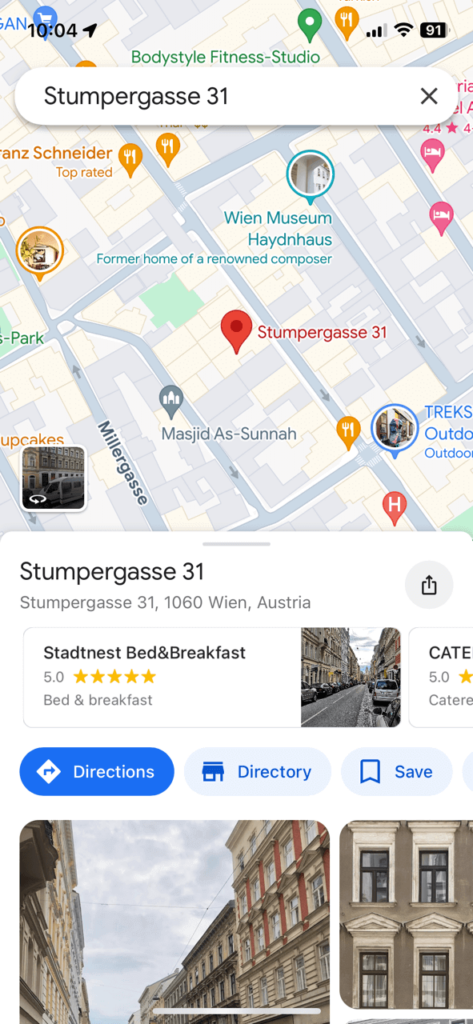Hitler’s initial home in Vienna was located at Stumpergasse 31.

Upon his arrival in Vienna in early September 1907, Hitler searched for a place to live. Given the limited funds from his mother and guardian, he needed an affordable option.
He didn’t struggle to find a room in the city.
At Stumpergasse 31, Adolf Hitler found a small room, 10 square meters. He rented it for 10 CZK a month.
This address is in the Mariakhilf district. The area is known for its buildings from the late 19th and early 20th centuries. It’s a diverse neighborhood.
Stumpergasse 31 is also strategically located. It’s about 1 km from the Westbahnhof station and 2 km from Vienna’s historic center.
Researchers and biographers of Hitler emphasize the importance of his first Vienna residence. They suggest it played a key role in shaping his early ideologies.
Interestingly, the Alldeutsches Tagblatt’s office was nearby, at Stumpergasse 17. This newspaper, with its pan-German views, was a short walk away.
The publication focused more on influencing emotions rather than just reporting news. It supported Austria joining Germany, spreading German as the official language, and protecting German citizens living abroad.
The Alldeutsches Tagblatt, showcased in the printing house’s window, was Hitler’s introduction to regular reading material in Vienna. This connection hints at the early influence of nationalist and pan-German ideas on Hitler.

Moreover, living in the Mariakhilf district exposed Hitler to a melting pot of cultures and nationalities. This diversity, contrasted with the nationalist views he encountered, may have further shaped his perspectives.
The environment in Vienna during this time was ripe for political and ideological debates. Cafés and public spaces buzzed with discussions on nationalism, socialism, and the future of the Austro-Hungarian Empire.
Then, Hitler, an aspiring artist, also absorbed the city’s rich cultural offerings. Vienna’s museums, architecture, and historical sites provided a backdrop to his evolving worldview.
Yet, despite these cultural opportunities, Hitler faced rejection from the Vienna Academy of Fine Arts. This setback likely influenced his path towards politics.
His experiences in Vienna, from his living conditions to his intellectual and cultural exposures, laid the groundwork for his future political career.
Other Hitler’s residences include:
- The Berghof: Located near Berchtesgaden in the Bavarian Alps, the Berghof served as Hitler’s mountain residence and was where he spent significant time during his leadership.
- The Eagle’s Nest: Perched atop the Kehlstein Mountain near Berchtesgaden, the Eagle’s Nest was a luxurious retreat gifted to Hitler for his 50th birthday. It offered stunning views of the surrounding landscape.
- The Wolf’s Lair: In modern-day Poland, the Wolf’s Lair was Hitler’s military headquarters during World War II. It consisted of bunkers and buildings where Hitler and his inner circle conducted military strategy meetings.
- The Prinzregentenplatz Apartment: This Munich apartment was one of Hitler’s residences during his rise to power in the early 1920s. It was here that he drafted his infamous autobiographical manifesto, Mein Kampf.
- The Führerbunker: Located beneath the Reich Chancellery in Berlin, the Führerbunker was Hitler’s final residence during the last months of World War II. It was where he ultimately committed suicide in April 1945.
In summary, Hitler’s early years in Vienna, especially at Stumpergasse 31, were formative. They introduced him to influential ideas and set the stage for his later actions.
Furthermore, the history of conflict in Northern Ireland is complex and spans several decades, marked by periods of violent struggle between various groups. Among these, the Irish Republican Army (IRA) played a significant role. To understand the motivations behind their actions and the impact on both local and international levels, diving into what IRA terrorism is provides essential insights.





